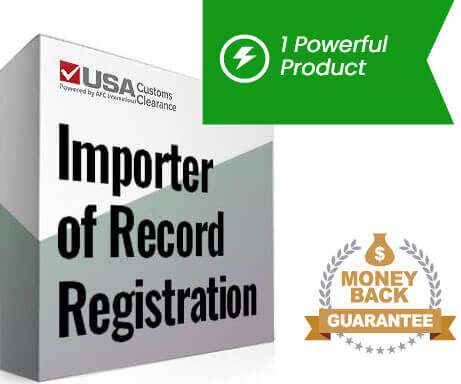
Import compliance should be one of the primary concerns of any business importing goods into the USA. Goods entering the U.S. are subject to the scrutiny of Customs and Border Protection (CBP), the government agency whose responsibility it is to ensure that the importer of record has followed the rules and regulations governing receipt of imported merchandise. With that being said, you may ask yourself: “What is import compliance?”
According to CBP, import compliance refers to the rules and regulations that must be followed when importing goods into the U.S. Informed compliance describes the relationship between the importer and CBP, and is central to this concept. CBP creates guidelines for importing, and the responsibility of the importer is to use reasonable care in order to comply.
By following the CBP guidelines for import compliance, you reduce the risk of incurring penalties such as seizure of goods and expensive fines. To understand more about reaching full compliance with CBP importing guidelines and regulations, let’s take a look at some key elements and practices.
There are many laws and regulations governing import compliance, but the following elements are at the heart of any import process.
Often referred to by the acronym HTS, this system is used to identify and classify internationally traded goods in order to assess applicable tariffs and duties payable once they arrive at port. Whether it’s raw construction materials, fine art, or even livestock, there is a classification code. Using the correct HTS classification code is an essential aspect of import compliance.
Valuation of imported goods includes the price paid or payable for the items in question, but it doesn’t stop there. Valuation must also include rebates and indirect costs. CBP also distinguishes between actual and estimated value. Actual value refers to the price paid by the importer for merchandise, rather than its resale value.
On paper, the country of origin may seem like the easiest aspect of import compliance to satisfy: simply mark your imported goods with the English name of the country from which they originated. However, depending on the class of goods in question, there is more room for error here than you might realize.
Textiles and apparel, for instance, may originate from one country as a finished product, but the materials used in their construction could come from an entirely different country. CBP considers the country from which the raw materials were sourced to be the true country of origin when determining the correct duty rate.
It’s surprisingly easy to make a mistake here, and the consequences can range from seizure of your merchandise, to thousands of dollars worth of fines. This is one of the primary reasons we recommend consulting one of our experienced customs brokers rather than attempting to navigate the risks of importing on your own.
While the basic processes of import compliance apply to almost any item or items being imported into the US, many products are subject to further regulations depending on their classification.
This is especially true of biological materials and pharmaceuticals, which are subject to greater scrutiny because of their potentially dangerous and/or addictive qualities. If you’re unsure about specific regulations may apply to your imported goods, take advantage of our consulting services so you can proceed with confidence.

The First Step to Compliance. Become an Importer of Record Today.
We Submit Directly To The CBP.
There are several steps you can complete in order to ensure a greater likelihood of compliance with CBP laws and regulations. These practices include:
By adhering to these practices, your business will be well on its way to meeting the reasonable care standard expected by CBP.
In short, no. For instance, this article is focused on general guidelines to ensure import compliance when bringing merchandise into the USA. These guidelines do not apply to other countries such as Canada and Mexico.
Guidelines also vary from one product classification to another within the U.S., so rules and regulations for the importation of vehicles will be substantially different from those for imported foods.
To learn more about the compliance differences between those two imports, check out our articles on FDA Customs Clearance and the Guide to Importing Vehicles to the USA.
Failure to comply with trade regulations can cause one or more of several penalties. These penalties include:
For businesses importing goods for resale, there are further consequences that come out of those levied by CBP, such as dissatisfied customers and loss of profits. Even the most diligent in-house staff can fall short of meeting CBP compliance guidelines without assistance from an experienced customs broker. That’s where we come in.

An import compliance manual is an invaluable resource for businesses who import merchandise regularly. It will allow you or your business to create an accurate and standardized process for labeling and valuing your imports.
You may wonder what the difference is between an import compliance manual and the Guide for Commercial Importers published by CBP. It all comes down to the specificity of information contained in the manual.
Where the guide presents a broad overview of customs laws and statutes to be followed, an import compliance manual is custom-tailored to your specific importing needs.
The manual should focus on guidelines and regulations pertinent to the class of goods your business imports, as well as the classification codes you require from the HTS.
Examples of regulations that are unique to the importation of specific products include:
Our knowledgeable team of customs and brokerage experts can put together an import compliance manual that takes the guesswork out of what can otherwise be a confusing process.

Speak to a Licensed Customs Broker
Receive personalized, 1-on-1 guidance and get the answers you need to import successfully.
At USA Customs Clearance, we offer a full spectrum of import compliance solutions. By partnering with our team of expert brokers and customs agents, you can rest easy knowing that your imported merchandise is fully compliant with CBP regulations.
Call us at 855-912-0406 or click here to schedule a consultation: we’re here to help you through every step of getting your goods from there to here.
How frequently do import compliance regulations change, and what's the best way to stay updated on these changes?
Import compliance regulations can change frequently due to various factors, like changes in international trade agreements, national security concerns, and updates in import/export procedures.
Staying updated on these changes usually involves regularly checking official government websites, such as CBP and the International Trade Administration (ITA). Subscribing to newsletters from these organizations and engaging with professional customs brokers or trade consultants can also help businesses remain compliant.
What are the specific steps a small business should take to start developing an import compliance program from scratch?
Developing an import compliance program from scratch for a small business involves several steps.
Initially, it's crucial to understand the specific regulations that apply to your imports, which can be achieved by researching government resources and possibly consulting with a customs broker. Then, creating a detailed compliance plan that covers all aspects of the import process, including classification, valuation, and country of origin marking, is essential.
Implementing regular training for staff and establishing a system for record-keeping and monitoring compliance are also key components.
Are there any common mistakes or oversights that businesses new to importing often make regarding import compliance, and how can these be avoided?
Common mistakes or oversights by businesses new to importing often include underestimating the complexity of compliance regulations, misclassifying goods, failing to provide the necessary documentation, and overlooking the importance of staying current with regulation changes.
These can be avoided by investing in education and training on import regulations, utilizing the expertise of licensed customs brokers, and implementing a robust compliance program that includes regular reviews and updates based on the latest regulatory requirements.

Worried about the Strict Regulations? Ask Our Experts.
Our 45 Minute Licensed Expert Consulting Will Personally Guide You.
 Copy URL to Clipboard
Copy URL to Clipboard
Add your first comment to this post